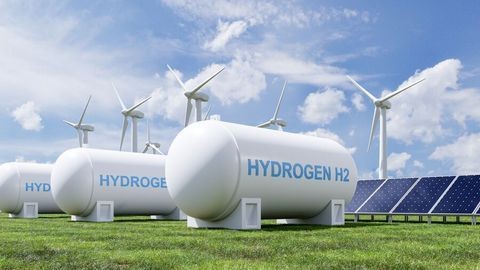SECURE 2.0 Act Will Impact Employer Retirement Plans
Client Alert | 5 min read | 01.03.23
On December 29, 2022 Congress finally passed the SECURE Act 2.0 (“ACT”) as part of a larger end-of-year spending bill. Several versions of the legislation have been proposed since the original SECURE Act was passed in 2019. The Act contains a number of provisions, many of which will primarily impact very small employers. Although not an exhaustive list, below are the provisions we expect will to have the greatest impact on mid and larger sized employers.
- Increase in required beginning date (Section 107): The Act increases the date by which retirement distributions must commence under a plan for a terminated employee from 72 to 73 starting January 1, 2023. Effective January 1, 2033, the age will increase further to 75. The new rule is effective with respect to individuals who attain age 72 after 2022. Thus, for a worker who turns age 72 on January 2, 2023, the required beginning date for that individual will be April 1 of the later of the year the individual retires or turns age 73 (assuming the worker retires before 2033).
- Catch-up contributions eliminated for higher-paid workers (Section 604): Beginning in 2024, catch-up contributions must be treated as Roth contributions for employees with compensation greater than $145,000. For employees making more than that amount, pre-tax deferrals will be capped at the Section 402(g) limit.
- Catch-up limit increased for older workers (Section 109): Starting in 2025, the catch-up limit for workers age 60-63 is increased to the greater of $10,000 or 50% more than the regular catch-up amount in that year. Unfortunately, the restriction on catch-ups for higher-paid workers applies starting in 2024.
- Automatic enrollment and notice changes (Section 101). All new 401(k) plans (established after the enactment of the Act) must automatically enroll participants in the 401(k) plan unless the employee opts out. The initial contribution amount can be between 3% and 10% of the employee’s compensation with the amount increased by 1% of compensation each year thereafter to at least 10% but not more than 15% of compensation. This new requirement is effective beginning in 2025.
- Student loan matching (Section 110): The Act provides that, starting in 2024, an employer may provide matching contributions under a 401(k) plan with respect to “qualified student loan payments.”
- Small financial incentives to participate (Section 113): Currently, employers are prohibited by the 401(k) rules from offering any incentives for employees to defer compensation into the 401(k) plan. Beginning in 2023 (immediate), an employer can offer “de minimis” financial incentives to employees who elect to have compensation deferred under a 401(k) plan. Plan assets cannot be used.
- Emergency Withdrawals (115): The early distribution additional tax under Code section 72(t) is modified to provide that a distribution (once per year, up to $1000) on account of an emergency or immediate financial need is excluded from the additional tax.
- Emergency Savings Account (Section 127): Beginning in 2024, an employer may establish an Emergency Savings Account Plan for non-highly compensated employees. Under this arrangement, an employee can contribute up to $2,500 of salary in a year.
- Reduction in RMD penalty (Section 302): The Act reduces the penalty for failing to make required minimum contributions from 50% to 25%.
- Roth Account RMD (Section 325): The Act eliminates, effective in 2024, the requirement to provide pre-death required minimum distributions from a Roth account in a retirement plan.
- Reduced Service Requirement for Long-term, Part-time Workers (Section 125). Under current law, ERISA 401(k) plans must allow an employee to contribute to the plan if the employee worked at least 500 hours per year with the employer for at least three consecutive years and was at least 21 years old by the end of that three-year period. Effective for plan years beginning after December 31, 2022, these rules for long-term, part-time workers are expanded to apply to ERISA 403(b) plans, as well, and the three-year requirement is reduced to two years for both 401(k) and 403(b) plans.
- Retirement Plan Overpayments (Section 301). In the event of inadvertent overpayments to a plan participants or beneficiaries, plan sponsors currently are required to attempt to recoup the overpayment and take various other steps to avoid negative tax and ERISA implications. In welcome news to employers, SECURE 2.0 provides that qualified, 403(b) and governmental plans (other than 457(b) plans) are not required to recoup “inadvertent benefit overpayments” so long as certain requirements are met. If the plan is subject to ERISA, fiduciary relief is also available, but there are some new restrictions on the employer’s ability to use future plan distributions to offset the overpayment.
- Retirement Savings Lost and Found (Section 303). One of the Department of Labor’s priorities in recent qualified plan audits has been the issue of “missing” or unresponsive plan participants and beneficiaries who are entitled to benefit payments. Unfortunately, plans often have little recourse for tracking down and paying lost individuals when diligent searches are unsuccessful. SECURE 2.0 requires the DOL, in consultation with the Department of Treasury, to create an online “lost and found” database within the next two years to assist participants and beneficiaries in identifying retirement benefits and contacting plan administrators.
- Expanded Self-Correction Opportunities under EPCRS (Section 305). Currently, employers have a limited ability to “self-correct” plan errors under the IRS’s Employee Plans Compliance Resolution System (EPCRS). Generally, self-correction has only been available for operational failures that were corrected within three years (but longer if the failure was “insignificant”). In the absence of self-correction opportunities, employers are required to either risk noncompliance or enter into the Voluntary Correction Program (VCP) under EPCRS, which is often expensive and time-consuming. SECURE 2.0 significantly expands the self-correction opportunities available to employers and directs the IRS to update the EPCRS program accordingly within the next two years.
- Disaster Relief (Section 331). Historically, Congress has granted temporary relief on a case-by-case basis for retirement plan distributions or loans after a federally declared disaster. SECURE 2.0 now provides permanent relief in the event of any qualified federally declared disaster. Most notably, participants will be able to take distributions up to $22,000 without incurring the 10% early withdrawal penalty. This relief applies to qualified, 403(b) and governmental 457(b) plans with respect to any federally declared disaster occurring on or after January 26, 2021.
- Roth Designation of Employer Contributions (Section 604). Prior to SECURE 2.0, employer contributions to a retirement plan could not be designated as Roth (after-tax) contributions. Effective upon enactment, SECURE 2.0 permits qualified, 403(b) and governmental 457(b) plans to allow employees to designate their employer matching or nonelective contributions as Roth contributions, including student loan matching contributions. If a plan sponsor chooses to permit this treatment, the Roth-designated employer contributions must be 100% vested.
Contacts
Insights
Client Alert | 2 min read | 12.19.25
GAO Cautions Agencies—Over-Redact at Your Own Peril
Bid protest practitioners in recent years have witnessed agencies’ increasing efforts to limit the production of documents and information in response to Government Accountability Office (GAO) bid protests—often will little pushback from GAO. This practice has underscored the notable difference in the scope of bid protest records before GAO versus the Court of Federal Claims. However, in Tiger Natural Gas, Inc., B-423744, Dec. 10, 2025, 2025 CPD ¶ __, GAO made clear that there are limits to the scope of redactions, and GAO will sustain a protest where there is insufficient evidence that the agency’s actions were reasonable.
Client Alert | 7 min read | 12.19.25
In Bid to Ban “Woke AI,” White House Imposes Transparency Requirements on Contractors
Client Alert | 5 min read | 12.19.25
Navigating California’s Evolving Microplastics Landscape in 2026
Client Alert | 19 min read | 12.18.25
2025 GAO Bid Protest Annual Report: Where Have All the Protests Gone?




